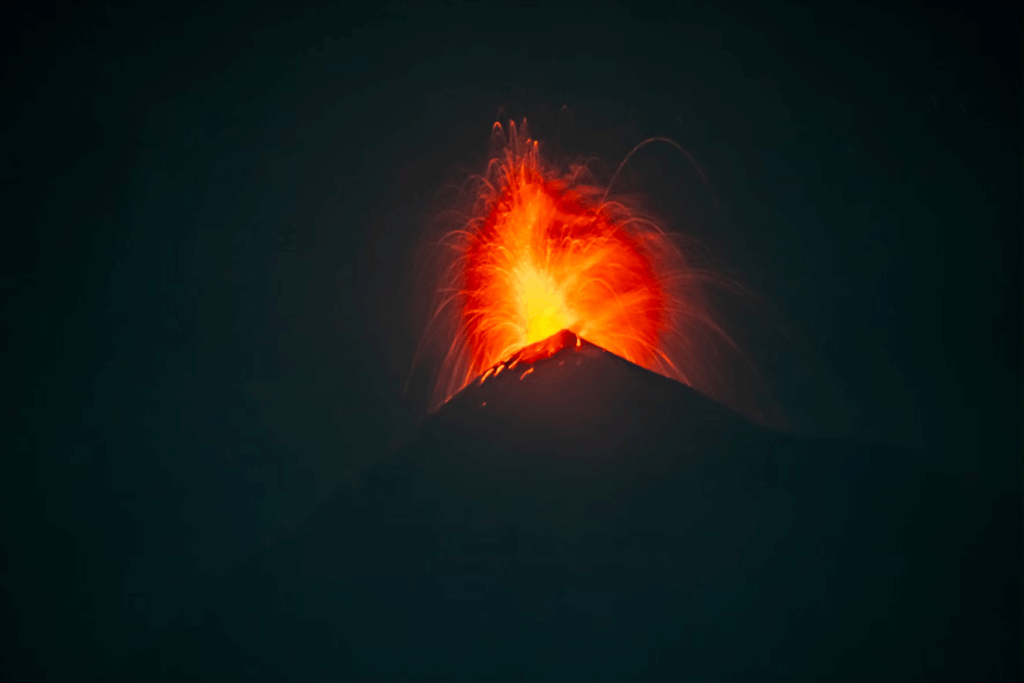Beneath Southern Italy’s Calm Streets, a Sleeping Giant Stirs: The Campi Flegrei Supervolcano Awakens
Locals around Pozzuoli have noticed something unsettling beneath their feet lately. The ground feels warmer, subtly restless, as if the earth itself is holding its breath.
Small earthquakes have become an unsettling regularity, while the faint, sharp scent of sulfur drifts through the air. Meanwhile, tourists casually enjoy their espresso, oblivious to the tectonic drama unfolding below.
Far from the famed Vesuvius, a far larger and more unpredictable force is waking up: the Campi Flegrei supervolcano—a dormant giant showing signs that could herald disaster on a scale few are ready to face.
A Surge of Seismic Activity Sends Ripples of Alarm
For months, geologists and volcanologists have been closely monitoring an alarming surge of activity beneath the volcanic caldera. Thousands of tremors have rattled the region, signaling the earth’s restless unrest. The seismic swarms, accompanied by gradual uplift of the land, suggest magma and gas are forcing their way upward, altering the subterranean landscape.

The stakes are high. This is not just another volcanic system slowly simmering—it’s a supervolcano, capable of unleashing an eruption that could reshape landscapes and lives across continents.
Campi Flegrei: Italy’s Quiet Colossus
Nestled just west of Naples, Campi Flegrei spans a vast 13 kilometers—a massive caldera born from colossal eruptions tens of thousands of years ago. Despite its size and power, the volcano has largely flown under the radar compared to its flashier neighbor, Mount Vesuvius. Yet beneath the bustling neighborhoods of Pozzuoli, over 360,000 residents live atop this volatile giant’s restless ground.
Unlike the gradual shifts typical in many volcanic areas, Campi Flegrei has entered a phase of rapid change, forcing scientists to reevaluate the risks.
May 2024: A Disturbing Milestone
The region’s uneasy slumber was punctuated in May 2024 by a magnitude 4.4 earthquake—the strongest quake in over four decades. But that was only the beginning. Within six months, more than 3,000 tremors shook the caldera, revealing escalating underground pressure.
One visible sign of unrest is bradyseism, a geological process where the ground steadily rises as magma and gases swell below. Since monitoring began in the 1950s, the caldera has risen over four meters, with an annual uplift rate of 3 to 4 centimeters—indicators of intense subterranean forces at work.
Carbon Dioxide and Magma: The Volcano’s Hidden Breath
Gas emissions offer another stark warning. Daily, between 4,000 and 5,000 metric tons of carbon dioxide escape from fissures and vents, signaling active magma beneath the surface. Researchers report that most of these emissions are directly linked to magma movement rather than passive chemical reactions.
Professor Christopher Kilburn from University College London stresses that the volcanic crust is under tremendous strain and could rupture suddenly. Current models place the magma reservoir just a few kilometers below, a dangerously shallow depth that increases eruption risk.
Lessons Etched in Ancient Ash
Campi Flegrei’s history is both a cautionary tale and a warning. Roughly 36,000 years ago, its massive eruption blanketed vast regions with volcanic ash, triggering climatic upheaval and contributing to the extinction of Neanderthals.
More recently, in 1538, it created Monte Nuovo—a new hill formed in just days—demonstrating how quickly the landscape can transform when this giant awakens.
Millions at Risk in a Complex Urban Landscape
What makes Campi Flegrei particularly menacing is its location amid dense populations. Over four million people live within the danger zone, including the entire metropolitan area of Naples. The region’s tangled infrastructure and dense urban sprawl complicate evacuation efforts, increasing vulnerability.
Should an eruption occur, the consequences would be swift and devastating: pyroclastic flows capable of leveling neighborhoods, thick ash clouds grounding flights and disrupting food production, and severe health hazards from airborne particulates.
Beyond Borders: Global Ramifications
An eruption of Campi Flegrei would resonate far beyond Italy. Volcanic ash could drift across Europe, grounding flights and disrupting economies.
Historical super-eruptions like Toba and Tambora illustrate how these events can plunge the planet into prolonged winters, causing crop failures and widespread hardship.
The potential for such global impact places Campi Flegrei on a critical watchlist alongside other restless giants like Yellowstone in the United States and Laguna del Maule in Chile.
Predicting the Unpredictable: The Challenge of Volcano Forecasting
Despite advances in technology—satellite monitoring, seismic networks, and ground deformation measurements—predicting the exact moment of eruption remains a formidable challenge. Some volcanic calderas have moved from unrest to eruption within months, leaving minimal time for evacuation.
Scientists rely on sophisticated models to estimate when the earth’s crust might fracture under pressure, but uncertainty remains a constant companion.
The Inevitable Question: When, Not If
Statistically, the likelihood of a supervolcano erupting during a person’s lifetime is far from negligible. Geological history shows that these rare but powerful events can cluster in time, increasing the risk of multiple eruptions over centuries.
The reality is clear: humanity faces an ongoing gamble with Earth’s primal forces. Campi Flegrei is a ticking time bomb, its awakening a grim reminder of nature’s might and unpredictability.
Final Thoughts
As tremors ripple beneath Campi Flegrei and gas vents signal rising magma, scientists and residents alike stand at the edge of uncertainty.
This colossal volcanic system reminds us that Earth’s most potent energies often lie hidden beneath our feet, silent for centuries before erupting with terrifying force.
For the millions living in its shadow and the world beyond, preparedness is not optional—it’s essential. The question is no longer whether Campi Flegrei will roar to life again, but when—and if we will be ready when it does.
